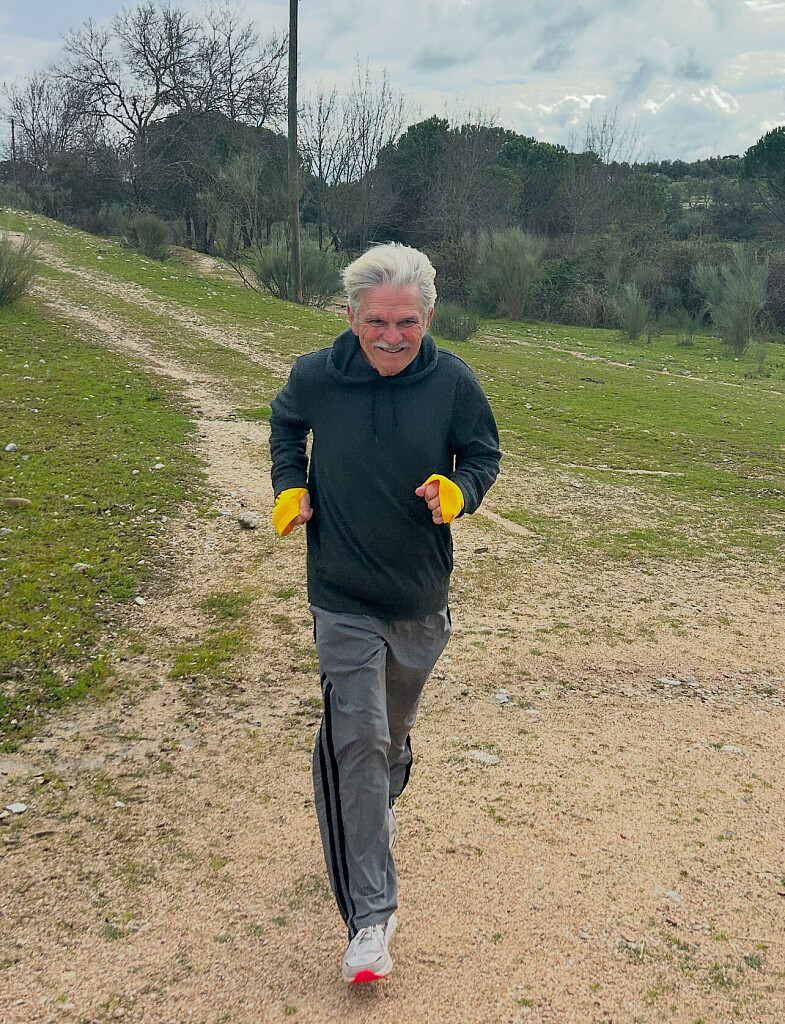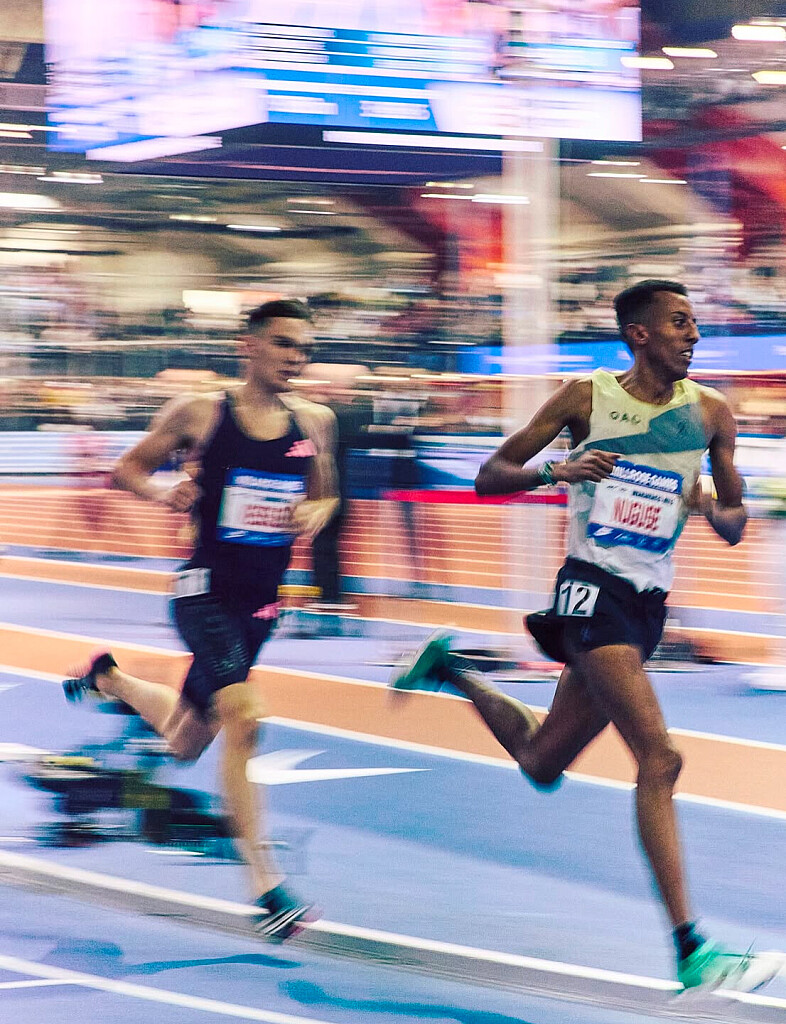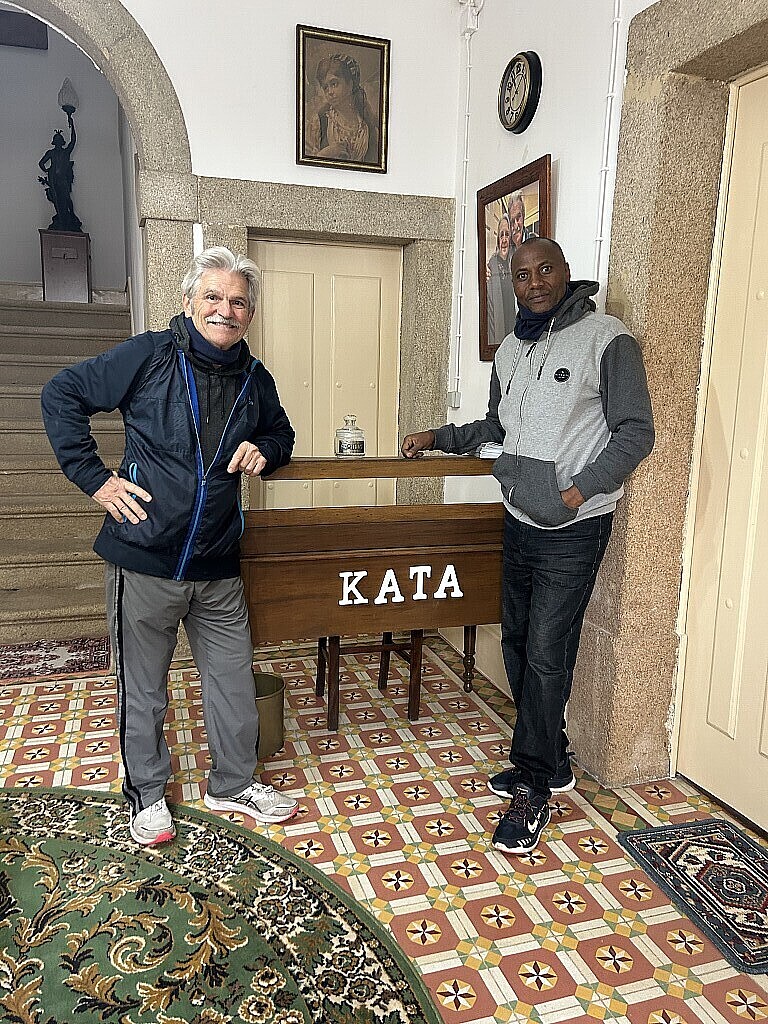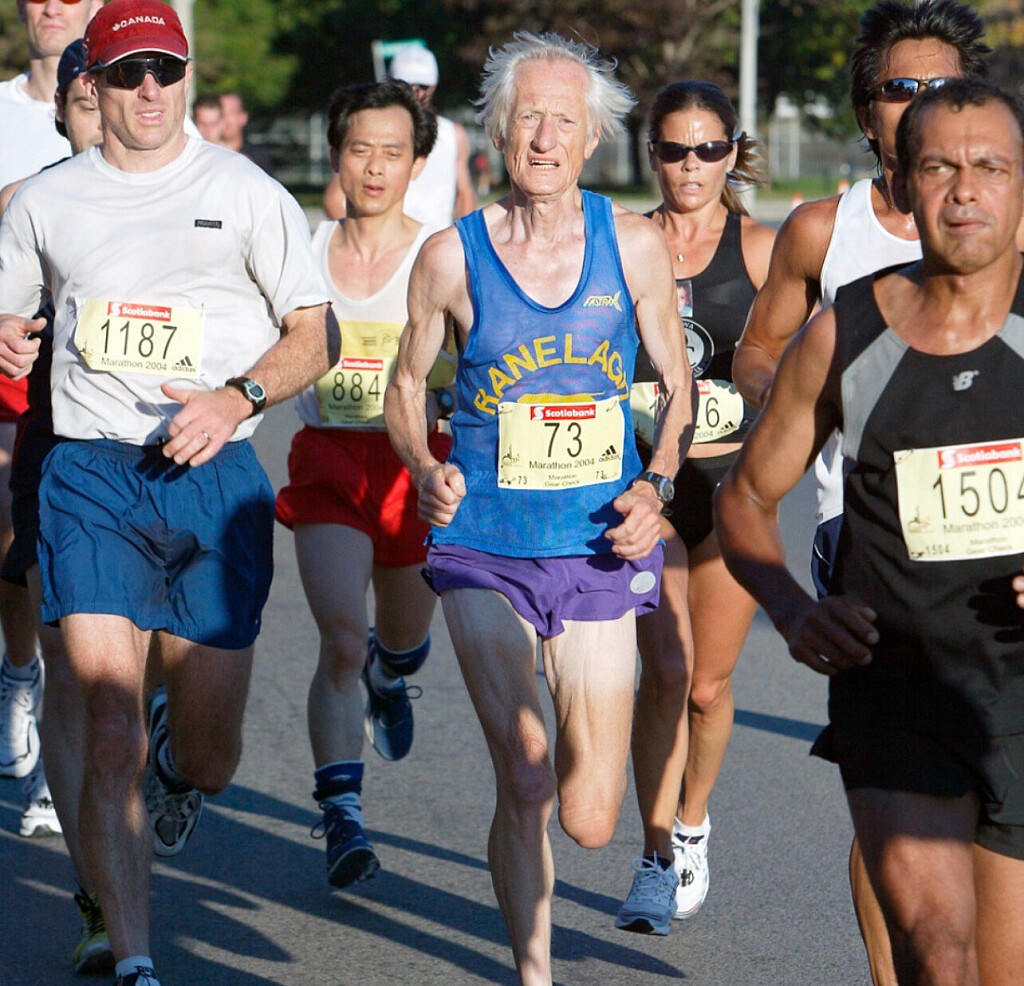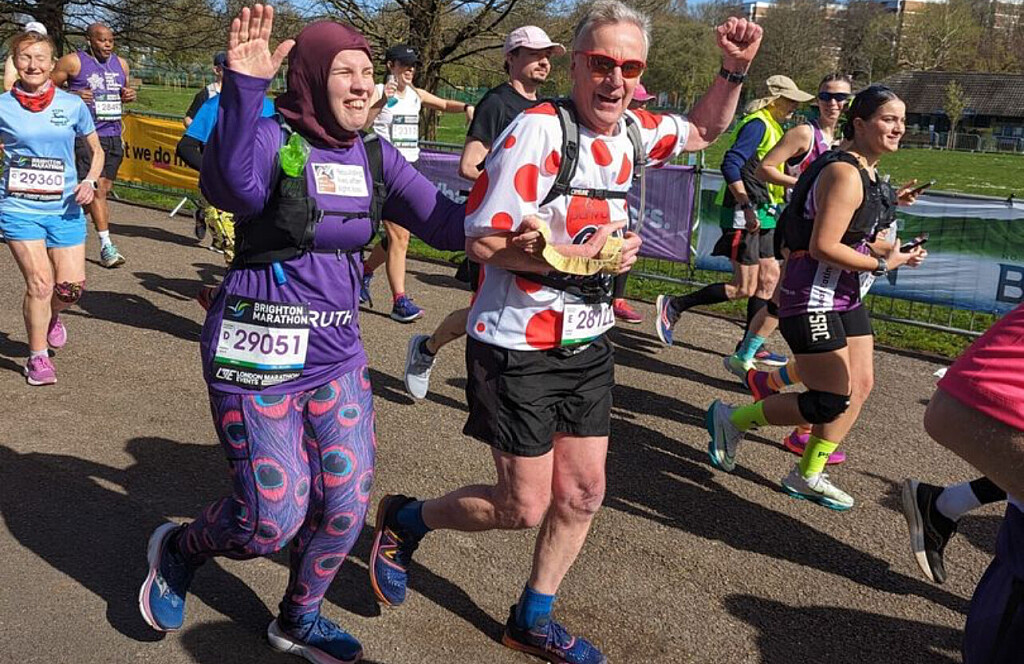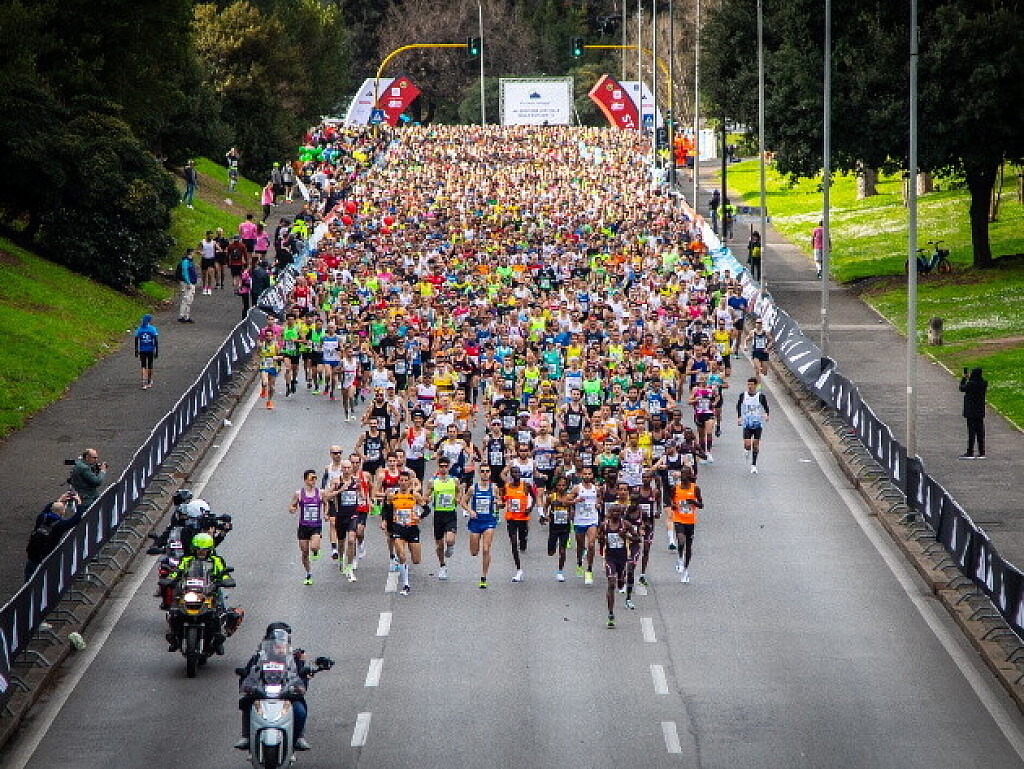Running News Daily
Top Ten Stories of the Week
3/8/2025
These are the top ten stories based on views over the last week.
Getting Back in Shape to Get in Shape My Journey After a Layoff
After an extended break from running due to an unexpected situation, I found myself facing the daunting task of rebuilding my fitness from the ground up. Acknowledging that I was out of shape was the first and perhaps most challenging step. Accepting this reality allowed me to approach my return with patience and a structured plan.
The Situation and the Solution

In mid-November, I ran into a situation with a tendon in my right calf. It felt like a stabbing pain, and for about a month, I mostly walked while trying to sneak in some running. That turned out to be a mistake. By early January, I realized that pushing through the discomfort had only made things worse. At one point, I could barely walk a 35-minute mile. That’s when I finally accepted that I needed to stop running altogether and find the right solution.

By February, I was finally able to run without pain, but the time off had taken its toll. While I had managed to walk an average of 35 miles per week, I felt completely out of shape for running. Now the road back begins.
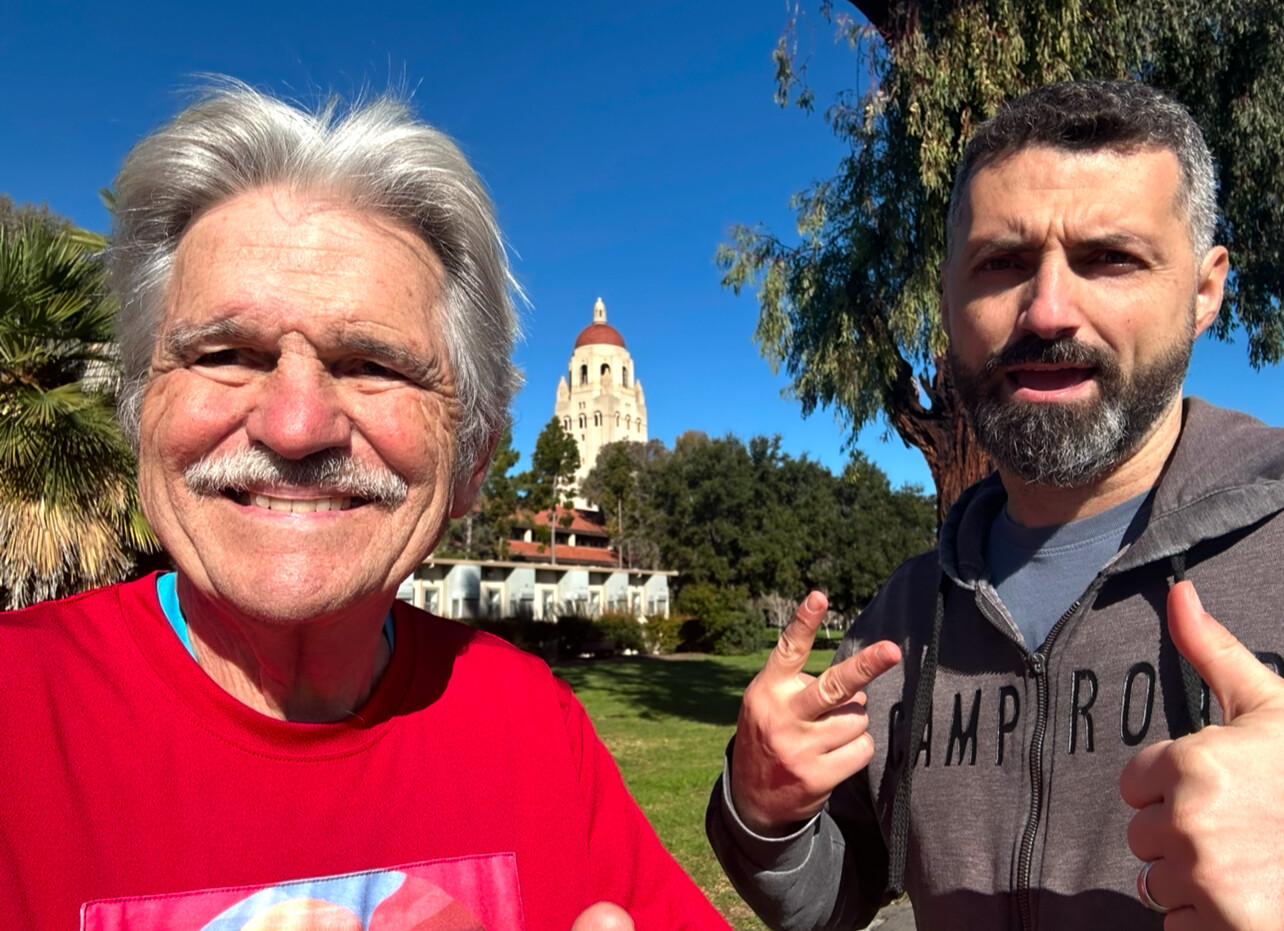
Embracing the Challenge
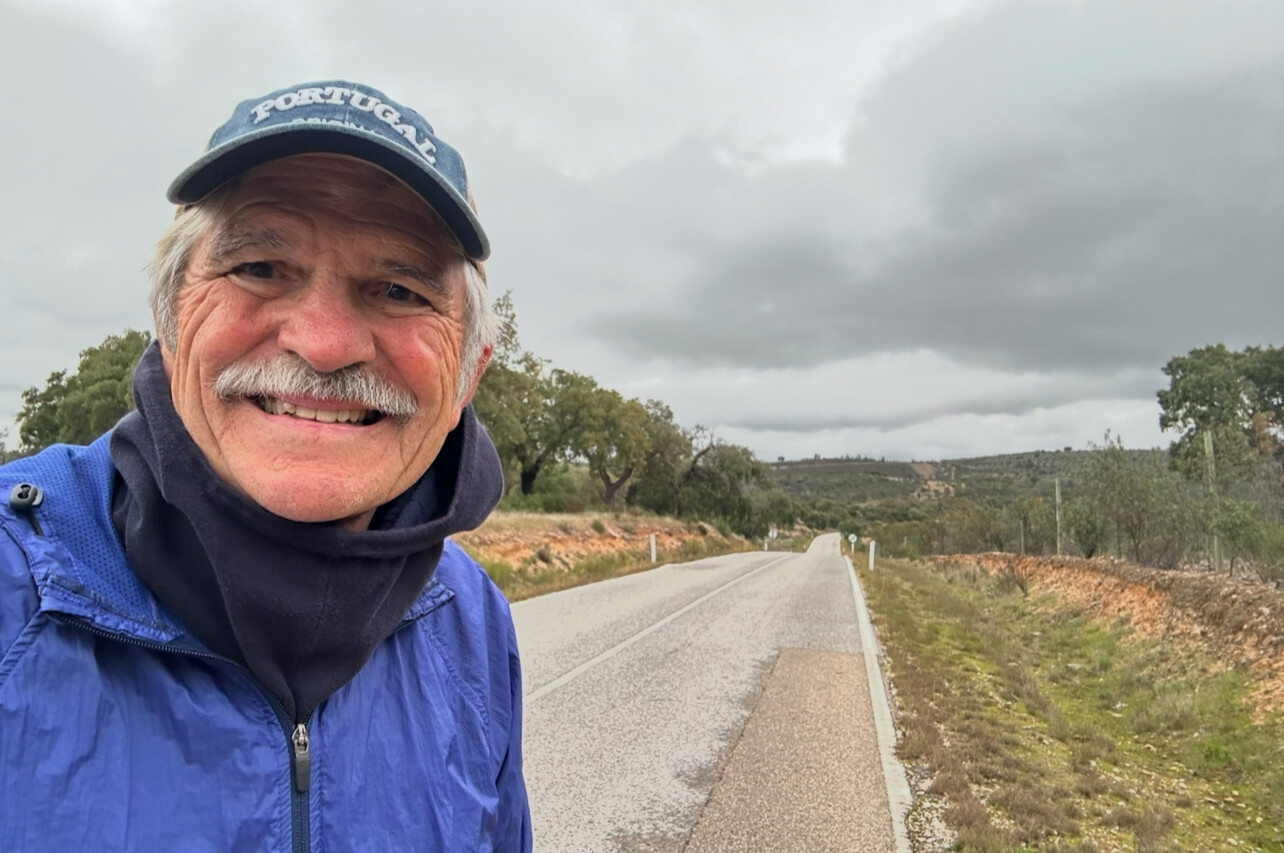
I quickly realized that even easy runs felt more taxing than they had before my situation. The joy and fluidity I once associated with running were replaced by heaviness and fatigue. To combat this, I focused on simply putting one foot in front of the other, without concern for pace or distance. This mindset shift helped me stay motivated and reduced the pressure to perform at my previous levels.
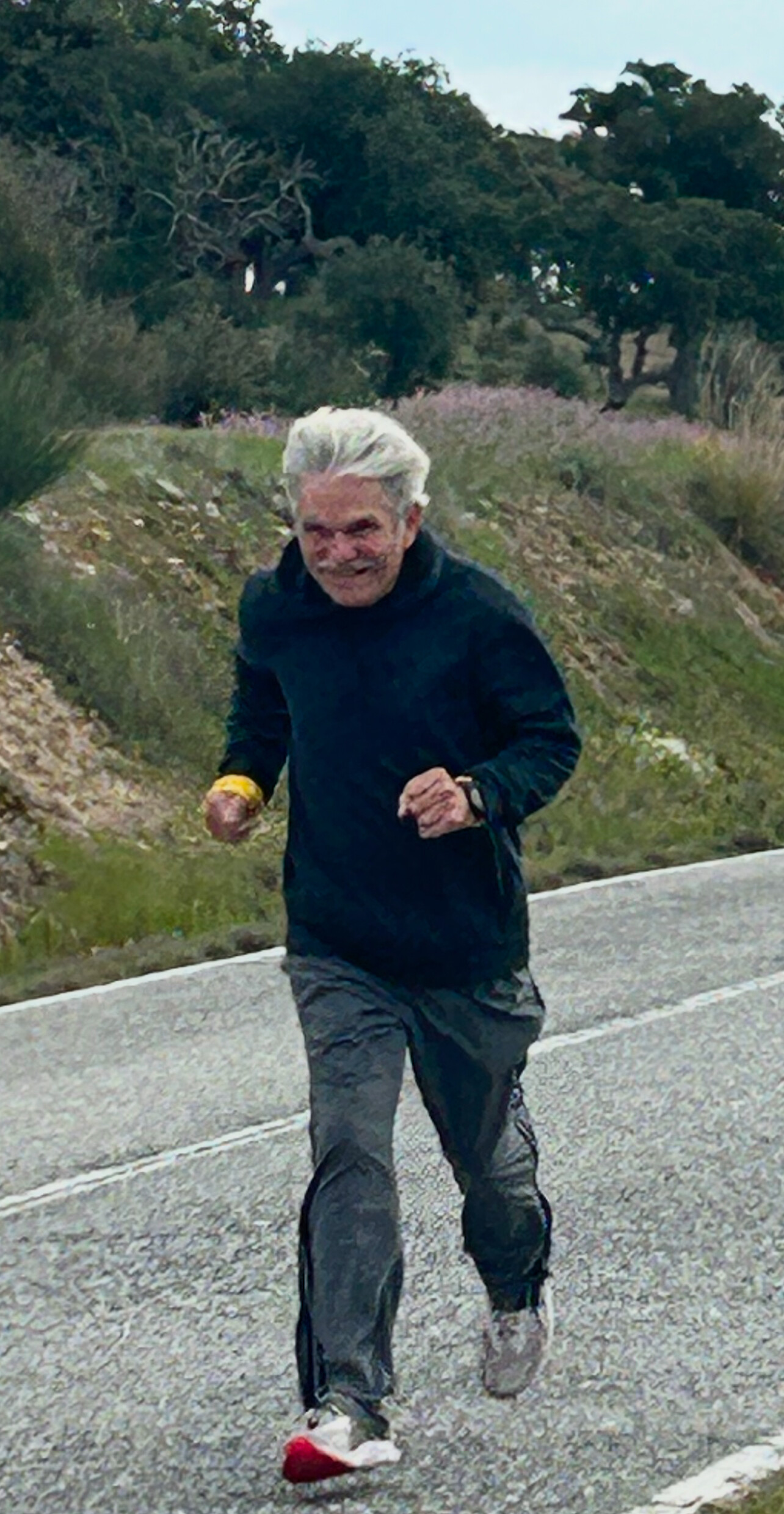
Breaking It Down
To make runs more manageable, I began breaking them into smaller segments. I would set a modest goal, like running to the count of 50, and upon reaching it, challenge myself to continue to 100, and sometimes even further. After each segment, I allowed myself a walking break to recover before starting again. This approach made the process less overwhelming and provided a sense of accomplishment with each milestone.
Avoiding Hills and Embracing Downhills
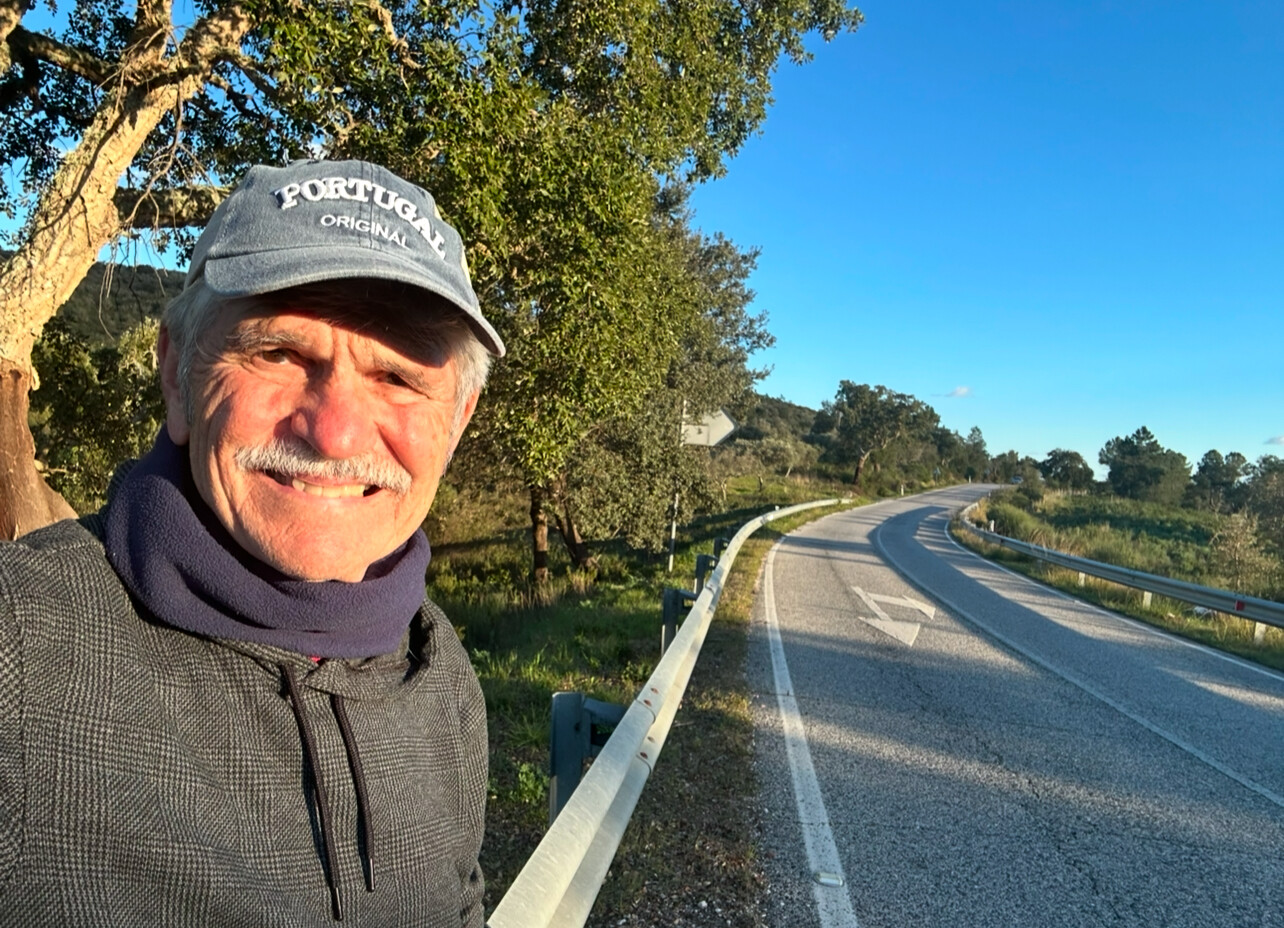
Understanding that my current fitness level wasn’t ready for the added strain of hills, I chose flatter routes to prevent unnecessary fatigue. Conversely, I used slight downhills to aid with leg turnover, letting gravity help me find a rhythm again.
The Role of Age and Weight
I acknowledged that returning to form might take longer due to age and any weight gained during my time off. This understanding fostered patience and self-compassion, reminding me that progress might be gradual but is nonetheless achievable.

Running With the Right People
When rebuilding fitness, I’m selective about who I run with. I prefer to run with those who understand my current goals and pacing rather than feeling pressure to keep up with others. Running with the right people can make the process more enjoyable and even take my mind off how I’m feeling, but I choose these situations carefully.
Redefining Training
I reframed this phase as “getting in shape to get in shape.” Recognizing that this wasn’t traditional training but a preparatory period allowed me to focus on rebuilding a foundation. I reminded myself that the ease and enjoyment I once found in running would return with time and persistence.
Looking Forward
While the process has been challenging, each run brings me closer to my previous fitness level. Every situation has a solution, and step by step, I’m finding mine. Hopefully, within four more weeks on this road, I will again be able to enjoy a 10K run at a pace of 9:30 per mile or even better. Before this situation I was able to run a 10k under 9 pace and enjoy it as well.
(02/28/25) Views: 227Bob Anderson
Vared Nuguse Aims to Reclaim Indoor Mile World Record in Boston
Yared Nuguse is taking another shot at history. This Sunday at Boston University’s Last Chance National Qualifier, the American middle-distance star will attempt to break Jakob Ingebrigtsen’s indoor mile world record of 3:45.14. He’ll have help in the form of pacers and pacing lights, but it’ll still take an all-out effort to bring the record back to U.S. soil.
Nuguse first set the record at the Millrose Games on February 8, running 3:46.63 to surpass Yomif Kejelcha’s 3:47.01 mark from 2019. But just five days later, Ingebrigtsen took the record down in Liévin, clocking 3:45.14 and putting himself in a league of his own. Now, Nuguse is back on the track, looking to erase the Norwegian’s name from the books.
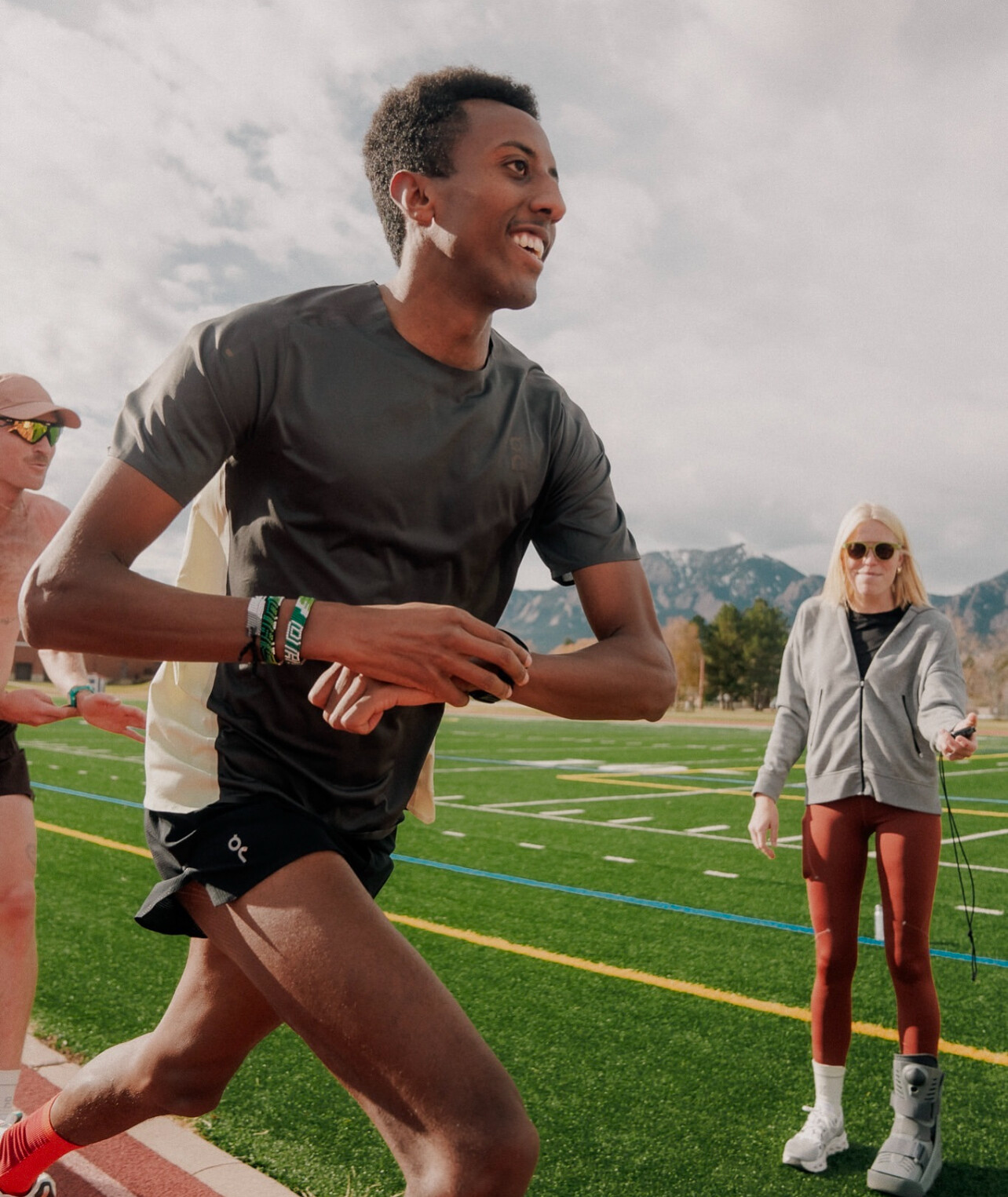
The setting for this attempt couldn’t be better. Boston University’s track is known for producing fast times, and with a carefully planned race setup, Nuguse has a real shot at reclaiming the record. His training and recent performances suggest he’s in shape to run faster than he did at Millrose, but shaving off nearly 1.5 seconds to surpass Ingebrigtsen is a daunting challenge.
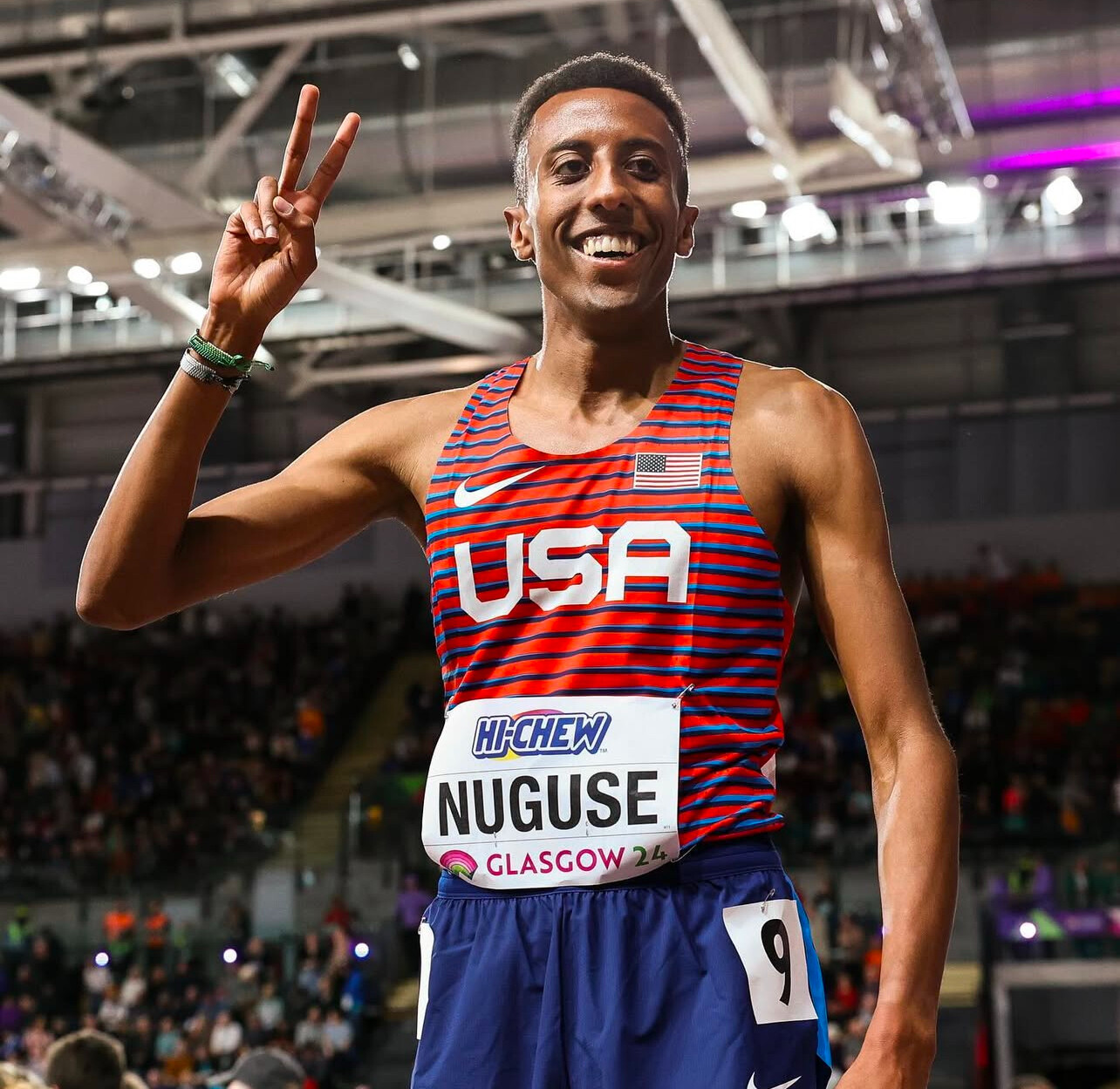
Whether he gets the record or not, this is a big moment in the ongoing battle for dominance in middle-distance running. Nuguse has proven he can rise to the occasion, and with the right execution, Sunday could be another milestone in his growing legacy.
(02/28/25) Views: 177Boris Baron
From Barefoot Champion to Marathon Legend: The Journey of KATA Coach Jimmy Muindi
Jimmy Muindi’s journey from a young barefoot runner in Kenya to an elite marathoner is a testament to perseverance, adaptability, and the drive to push beyond limitations. His incredible career includes winning the Honolulu Marathon six times, running a 2:05:24 marathon, and playing a key role in pacing Paul Tergat to a world record 2:04:55 at the 2003 Berlin Marathon.
Now, Muindi is bringing his experience to KATA Portugal as a coach, offering training, insights, and mentorship to runners of all levels. His coaching philosophy is deeply rooted in his own experience as a professional runner, ensuring that guests at KATA Portugal will learn from someone who has lived the life of a world-class athlete.
This three-part series will explore Muindi’s remarkable career and his transition to coaching:
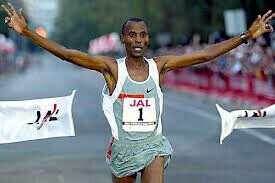
• Part One: His journey from humble beginnings to becoming an elite marathoner and record-setting athlete.
• Part Two: His coaching success in Kenya and what he brings to guests at KATA Portugal.

• Part Three: Nutrition and race preparation—why the most important meal for a big race happens two nights before and how Muindi’s personal approach to fueling has helped him perform at the highest level.
Humble Beginnings and Early Inspiration

Born into a family of eight children, Muindi was the firstborn and grew up in modest conditions. Food was scarce, and life was challenging, but his mother, was a runner who competed only in school-level races, became his first source of inspiration. At age 15, his mother encouraged him to start running, recognizing his potential.
Then, in 1988, Muindi’s cousin qualified for the World Junior Cross Country Championships. Seeing someone from his own family reach the international stage ignited his dream. Despite his family’s simple way of life, Muindi was determined to see what he could achieve.
High School Breakthrough and First Steps to Elite Running

Even without structured coaching, Muindi trained on his own and quickly became the best runner in his school. He performed exceptionally well in long-distance events, often lapping other runners in the 10,000 meters. His talent caught the attention of a national coach, who invited him to a training camp—a turning point that would take his career to the next level.
The training camp was six kilometers from Muindi’s home, and without access to transportation or proper gear, he ran there barefoot to train with the coach who recognized his talent. The camp had about 15 to 20 athletes, and when he joined, he could beat everyone except for two runners—both of whom had running shoes and proper training gear.
Determined to improve, Muindi trained at the camp twice per week under the coach’s guidance. On the other days, he trained on his own four times per week, but because he lacked proper training knowledge, he simply ran miles and miles barefoot, unknowingly building his endurance and toughness.

Rapid Improvement and a Life-Changing Connection
The training at the camp was intense. After running six kilometers as a warm-up just to get there, Muindi and the group would do a 6K to 10K hard effort, often running at a 4:00 to 4:30 per kilometer pace at 2,400 feet elevation.
In addition to tempo efforts, they incorporated hill training and track workouts on alternate days. A typical track session included: 4x800 followed by 6x400 and finishing with 4x200.
Muindi made rapid progress. Within two months, he became the best runner in the group, surpassing even those who had more experience and better gear. Recognizing his potential, his coach reached out to Cosmas Ndeti, a rising Kenyan marathoner who was competing internationally, particularly in Japan.
Breakthrough on the World Stage
After meeting Cosmas Ndeti, Muindi’s career took off. Within two months, he became the top junior athlete in Kenya for the 3000m steeplechase and qualified for the World Junior Athletics Championship in South Korea. His rapid rise earned him his first pair of training shoes, a reward that symbolized his status as an emerging talent.
However, when Muindi arrived in South Korea for the World Junior Championships, he faced an unexpected challenge. He was given racing spikes for the first time in his life, but having never worn them before, he struggled to run in them. Instead of risking discomfort or injury, he made the bold decision to compete barefoot, just as he had trained back home.
Against all odds, Muindi won the gold medal, officially launching his international running career.
"So here I was—my first time on an airplane, traveling to South Korea, and winning the gold,” Muindi recalls. “But as a junior, there was no financial benefit. I arrived back home to the same place I left.”
Unlike today, where young athletes receive government incentives for international success, Muindi returned home without financial support. “In today’s world, the government would have given me 1 million KES ($7,700 USD) for that gold medal,” he says. But back then, he had to continue training, hoping his talent would eventually open doors.
A New Opportunity in Yugoslavia
Because of his gold medal, Muindi received a lot of exposure, and just six months later, he was invited to run a half marathon in Yugoslavia. He made the most of the opportunity, finishing second with a time of 1:02:42.
This was not just a breakthrough in racing—it was also Muindi’s first real financial reward from running. “I won $800 USD. Wow, I was excited and had never seen that much money before!” he remembers. This prize money gave him a glimpse of what running could do for his future, motivating him to keep pushing forward.
Honolulu Domination and Marathon Success
Muindi launched his marathon career with a runner-up finish at the 1997 Honolulu Marathon. He quickly made the Honolulu race his race in the years to follow. In an era when Kenyan athletes were dominating distance running, Muindi became a legend in Honolulu – he went on to win the Honolulu Marathon an astonishing six times (1999, 2000, 2003, 2004, 2005, 2007) . In 2004, he set a course record of 2:11:12, a mark that remained unbroken for four years . This string of victories, including three straight from 2003 to 2005, made him inseparable from Honolulu’s running lore. "The course has challenging hills and the weather is hot and humid," he remembers "but the race became part of my life and my family."
His success wasn’t confined to one event, either. Muindi proved his prowess on the global stage by capturing the Rotterdam Marathon title in 2005 with a personal best time of 2:07:50 . He also earned podium and top-five finishes at other major marathons – for instance, placing 3rd at the 2006 Chicago Marathon and 5th at Berlin in 2002 . These achievements against world-class fields reaffirmed his status among the elite marathoners of his era.
Such professional success afforded Muindi not only international experience but also a platform for the next phase of his life. After years of training alongside and against some of the world’s best, Muindi had accumulated a wealth of knowledge about endurance training, strategy, and the “Kenyan way” of running.
Now in his fifties, he has transitioned into coaching, eager to share that hard-earned expertise. He joined KATA in Thika, Kenya – a running academy founded in 2019 by Runner’s World founder Bob Anderson – as one of its expert coaches. In this role, Muindi’s daily lifestyle still revolves around running, from sunrise training runs to mentoring athletes, very much a continuation of the regimen he followed as a pro.
The difference is that today he channels his energy into developing others. His success as a professional runner paved the way for this career: it gave him credibility and a passion he now imparts to up-and-coming runners. In essence, Muindi has parlayed his storied racing career into a thriving vocation as a coach – and his identity as an athlete-turned-coach is a direct product of the triumphs and lessons of his competitive years.
Giving Back: Family and Coaching
Muindi always believed in taking care of his family first. In 1996, using prize money, he bought 10 acres of farmland for his father. Two years later, he built a house for his parents, ensuring their long-term stability. With his family secure, he focused on his own future, purchasing five acres of prime land and building his own house. Today, he uses his land to grow green vegetables, avocados, and raise chickens.
Now, Muindi is giving back to the next generation of runners. He has joined KATA Portugal as a KATA coach, where he shares his expertise and experience, helping others chase their own dreams. His lifestyle today is a direct result of his success as a professional runner, and now he is using that knowledge to guide others.
Coming Next in Part Two
Jimmy Muindi’s success as a professional runner has shaped his coaching philosophy, and now, as a KATA Portugal coach, he is offering world-class training to runners from all backgrounds.
In Part Two, we will explore his coaching success in Kenya and what he brings to guests at KATA Portugal. We’ll take a closer look at the training programs he has developed, the athletes he has worked with, and what runners can expect when training under his guidance.
Stay tuned for the next installment as we dive into Muindi’s transition from elite marathoner to an elite coach and how he is bringing the Kenyan way of training to Portugal.
(photos: 1. Muindi setting the course record in 2004. 2. At KATA with Bob Anderson. 3. Racing in Honolulu 4. Muindi with some of KATA Portugal staff with Bob and Catherine Anderson.
(03/04/25) Views: 155Racing Into Shape The Role of Frequent Racing in Building Fitness and Speed
Many runners believe that the best way to race well is to train hard, peak for an event, and taper properly. While this is a proven approach, another method—racing into shape—has helped some of the world’s most remarkable runners achieve outstanding results. One of the best examples is Ed Whitlock, the Canadian running legend who set multiple age-group world records. Whitlock didn’t follow conventional training methods. Instead, he relied on a combination of long, steady runs and frequent races to sharpen his fitness. His approach raises an important question for competitive runners at all levels: Can racing more often help you reach peak performance?
The Benefits of Racing Into Shape
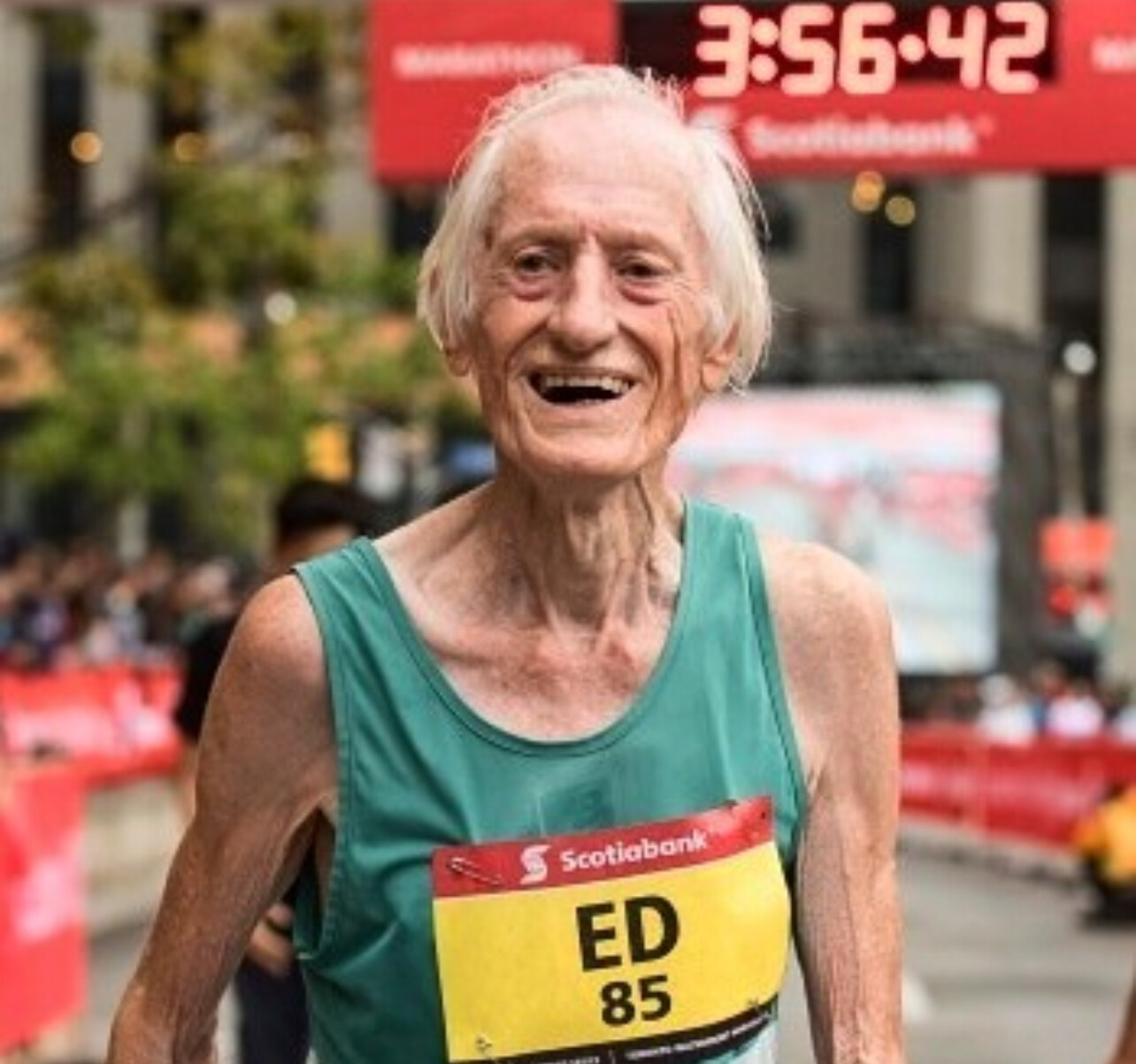
Racing is more than just a test of fitness—it can be a key component of training. Many experienced runners have discovered that racing frequently provides unique physical and mental benefits that structured workouts alone cannot replicate.
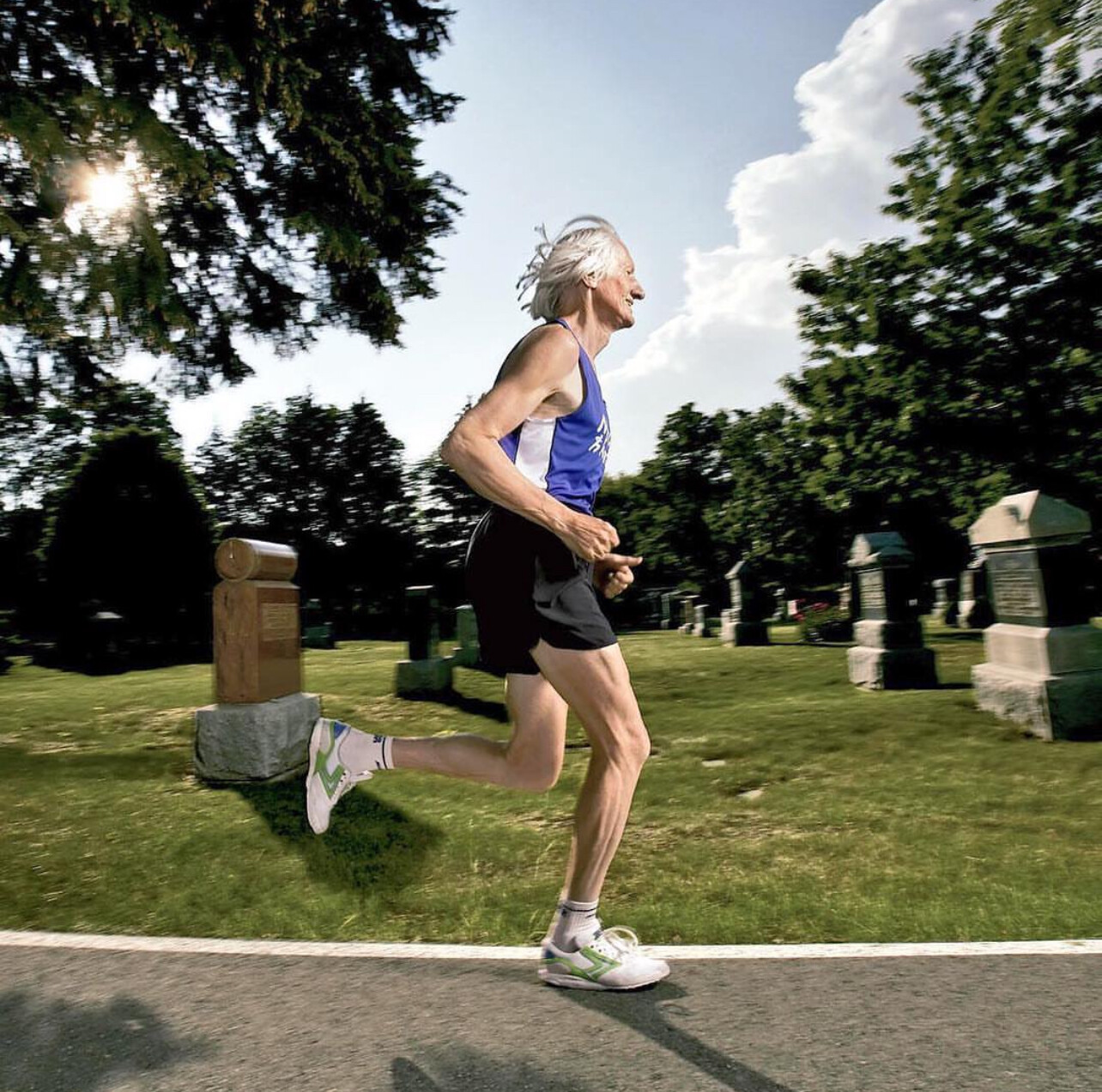
1. Race-Specific Conditioning– Hard workouts simulate race conditions, but they rarely match the intensity of actual competition. The adrenaline, pacing, and pressure of a real race push runners beyond what they typically achieve in training. Racing often teaches the body to handle fatigue and sustain effort at higher intensities.
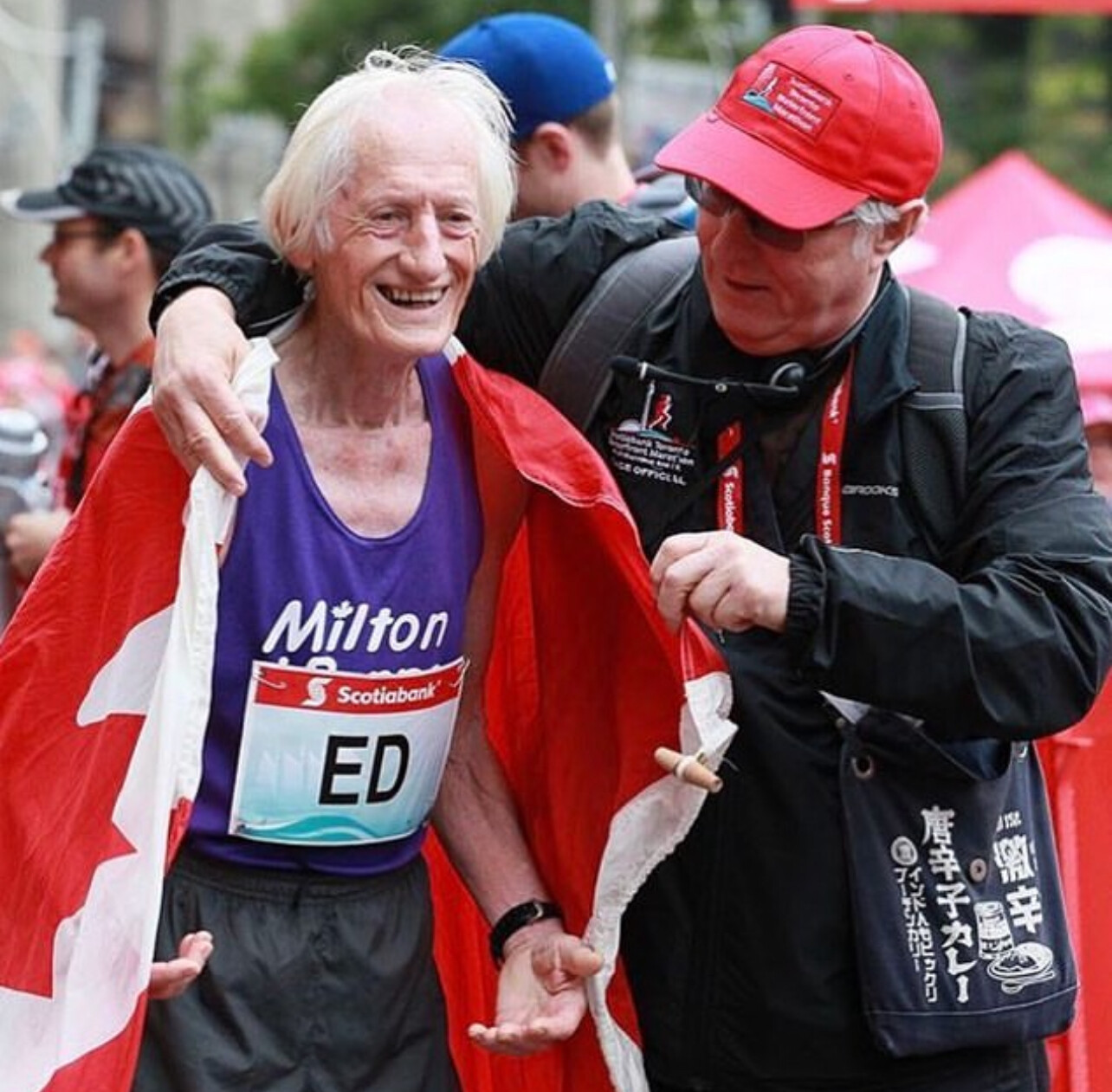
2. Mental Toughness– Confidence and experience play a huge role in racing success. Lining up at the start line regularly helps runners develop a sense of comfort in competition. The more you race, the better you understand pacing, strategy, and how to manage discomfort.
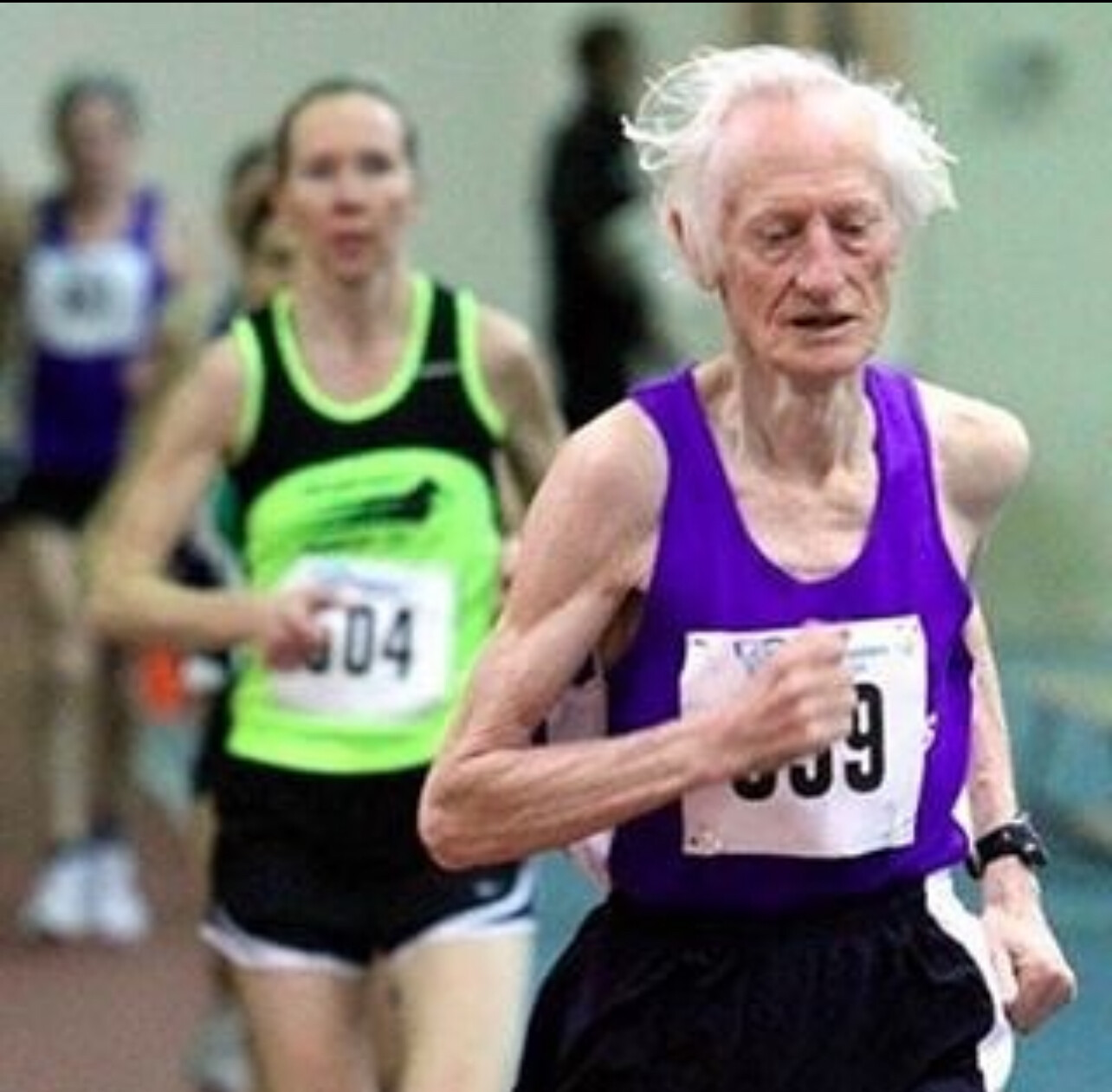
3. Pacing Mastery– Many runners struggle with pacing, going out too fast or leaving too much energy on the table. Racing frequently provides opportunities to fine-tune pacing strategy through trial and error, helping runners learn what effort feels sustainable at different distances.

4. Improved Recovery and Adaptation– Racing forces the body to recover efficiently. Over time, this repeated cycle of hard efforts followed by recovery leads to better adaptation, strengthening the muscles, cardiovascular system, and mental resilience needed for peak performance.

5. Keeping Training Fresh– Some runners burn out from monotonous training cycles. Frequent racing keeps motivation high, provides tangible benchmarks of progress, and eliminates the need for excessive structured speedwork, as race efforts themselves serve as high-intensity sessions.
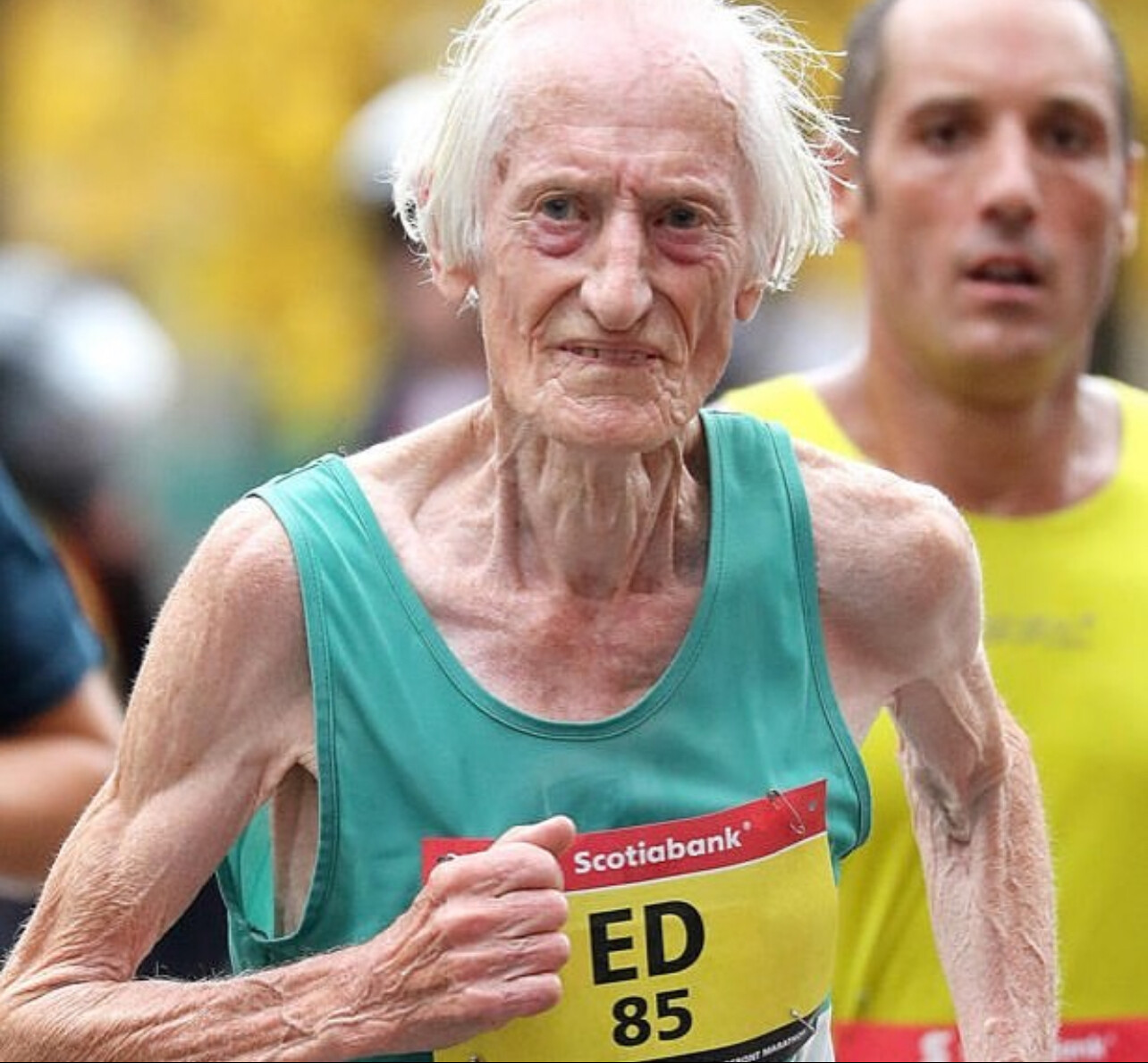
Ed Whitlock’s Racing and Training Philosophy
Whitlock’s results prove that racing into shape can work at the highest level. At age 72, he became the first person over 70 to break three hours in the marathon, running 2:59:10 in Toronto. Four years later, at 76, he shattered the 75+ world record with a time of 3:04:54. Even into his 80s, he continued setting records, running 3:15:54 at age 80 and an astonishing 3:56:33 at 85. His ability to recover quickly and use racing as part of his training set him apart from other masters runners. Whitlock’s approach was simple—he avoided speedwork, instead running for hours at a time in a cemetery near his home, logging high mileage at an easy pace, and letting races provide the intensity needed to maintain world-class fitness.
How to Incorporate Racing Into Your Training
While racing frequently can be beneficial, it needs to be approached with balance. Ed Whitlock, for example, complemented his frequent races with long, slow runs, often lasting two to three hours, to build his aerobic base. His method allowed him to develop incredible endurance while keeping his legs accustomed to race conditions.
1. Choose the Right Distances– Shorter races, such as 5Ks and 10Ks, can serve as speed workouts, while longer races, like half marathons, help with endurance. Mixing distances allows for well-rounded fitness without excessive strain.
2. Adjust Training Around Races– Racing frequently means adjusting your weekly training load. Instead of doing hard interval sessions, let races serve as your speedwork. Recovery runs and easy mileage should make up the bulk of non-race days.
3. Use Races as Workouts– Not every race has to be run at full effort. Some can be used as controlled tempo efforts, negative-split exercises, or even progressive runs where you finish strong.
4. Listen to Your Body– Racing too often without adequate recovery can lead to fatigue or injury. Pay attention to how your body responds and be willing to skip races or reduce intensity when necessary.
5. Gradually Build Race Frequency– If you’re not used to racing often, start by adding one race per month and increase as your body adapts. Some runners thrive on weekly races, while others need more time between efforts.
Does Racing Into Shape Work for Everyone
While frequent racing has proven effective for runners like Ed Whitlock, it’s not for everyone. Some runners respond better to structured training and carefully planned peaks. However, for those who enjoy competition and recover well, racing often can be a powerful tool for improvement. The key is to balance high-intensity race efforts with proper recovery and easy mileage to avoid burnout.
Racing into shape is an old-school yet highly effective training philosophy that has helped runners achieve world-class performances. It builds mental toughness, improves pacing, and strengthens the body’s ability to handle sustained effort. Whether you’re chasing personal bests or simply looking to keep training exciting, frequent racing could be the missing piece in your running journey. If it worked for Ed Whitlock, it might work for you.
Ed would do three hour training runs around a cemetery at a very easy pace (third photo).
(02/28/25) Views: 121Boris Baron
Yared Nuguse Runs 3:47.22 in Mile Record Attempt, Falls Just Short of World Mark
Yared Nuguse delivered a thrilling performance in his highly anticipated mile world record attempt but came up short of Jakob Ingebrigtsen’s indoor world record of 3:45.14. Running at the Last Chance Indoor Qualifier, Nuguse clocked an impressive 3:47.22, securing victory and the fifth-fastest indoor mile time in history.
The American middle-distance star, who previously held the indoor mile world record before Ingebrigtsen broke it earlier this season, showed incredible form but wasn’t quite able to lower the global mark. Despite falling short of his ultimate goal, Nuguse’s time was another testament to his world-class ability and puts him firmly in the conversation for future record-breaking attempts.
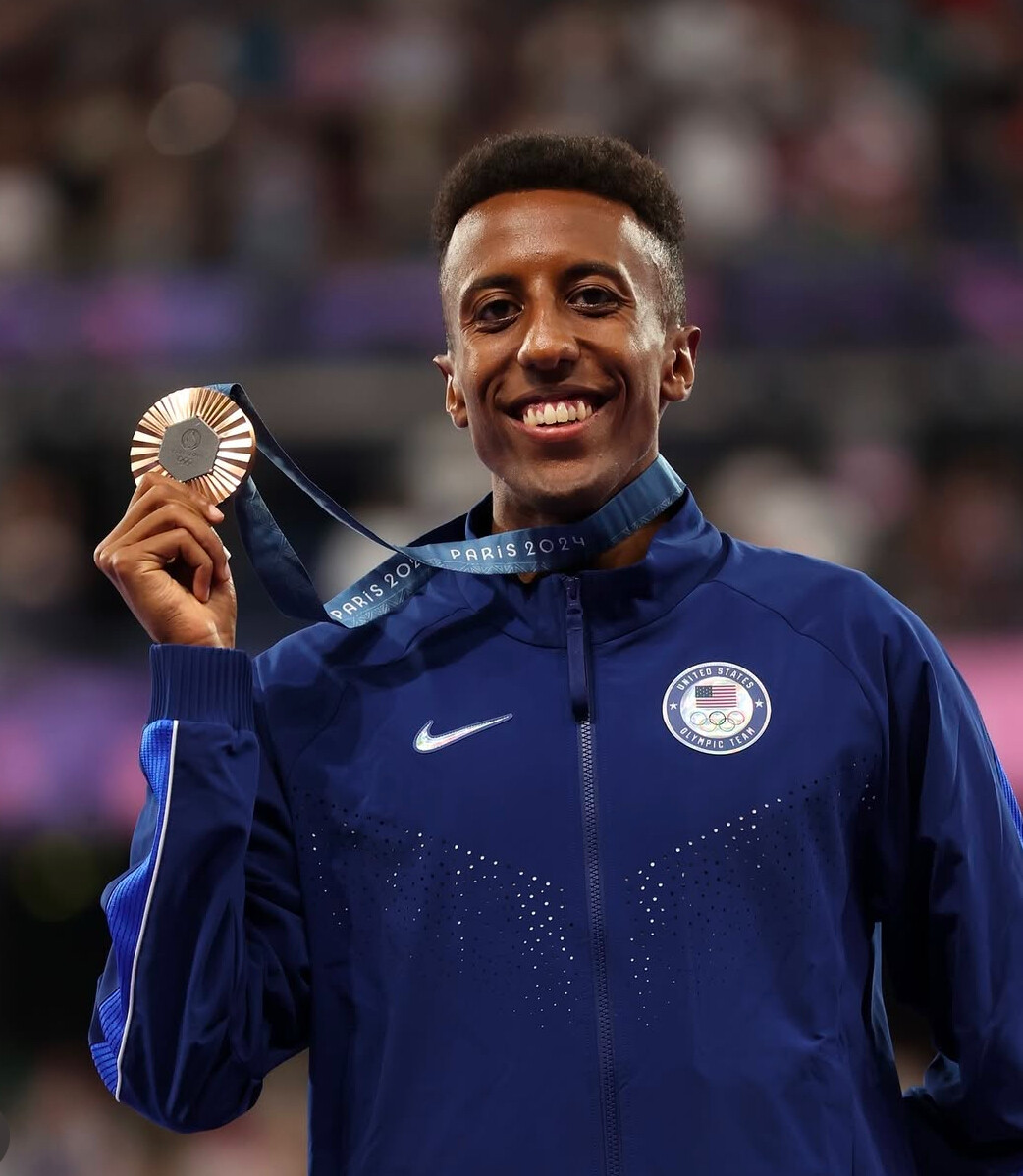
Nuguse took control of the race early, using pacers and the assistance of pacing lights to stay on world record pace through the early stages. However, as the laps progressed, he slightly faded, missing the target time but still producing a historically significant performance.
Behind him, Oliver Hoare finished second in 3:50.77, with Luke Houser rounding out the podium in 3:51.14. The depth of the field showed the growing strength of American and international milers, with several runners posting strong sub-3:53 times.
While the world record remains intact, Nuguse’s performance reinforces his status as one of the top milers globally. With outdoor season approaching and the Paris Olympics on the horizon, the American standout remains a strong contender for further history-making performances.
(03/03/25) Views: 114Blind Runner Ruth Forrest to Conquer 2025 London Marathon with 71-Year-Old Guide
Ruth Forrest, blind since birth, is set to achieve a remarkable milestone by participating in the TCS London Marathon on Sunday, April 27, 2025. This iconic event, renowned for its scenic route through London’s historic landmarks, will be a testament to Ruth’s resilience and determination.
Ruth’s journey into running began during the COVID-19 pandemic when she was inspired by watching the Great North Run on television. Determined to experience the thrill of running herself, she connected with Peter Williams, a seasoned runner in his early seventies, to serve as her guide. Their partnership blossomed over the past three years, with regular training sessions that not only enhanced Ruth’s physical endurance but also fostered a deep friendship built on mutual trust and dedication.
Peter, a veteran runner with numerous races under his belt, has been instrumental in Ruth’s preparation. His experience and commitment have provided Ruth with the confidence to tackle longer distances, culminating in their decision to take on the London Marathon together.
The TCS London Marathon, scheduled for April 27, 2025, is one of the world’s most prestigious running events, attracting participants from across the globe. The race offers a unique opportunity for runners to traverse the city’s streets, passing iconic sites such as the Tower of London, the Houses of Parliament, Big Ben, and Buckingham Palace. The event is also renowned for its enthusiastic spectators, who line the course to cheer on participants, creating an electrifying atmosphere.
Ruth’s participation in the marathon is not just a personal achievement but also a powerful statement about overcoming adversity. Her story serves as an inspiration to many, demonstrating that with determination and the right support, individuals can transcend the challenges posed by disabilities.
As Ruth and Peter prepare to embark on this 26.2-mile journey, they exemplify the spirit of camaraderie and perseverance that defines the London Marathon. Their story is a poignant reminder that the marathon is not just a race but a celebration of human resilience and the unyielding pursuit of dreams.
(03/02/25) Views: 108Boris Baron
Graham Blanks Runs Historic 7:29.72 in Boston, Becomes Second Fastest American Ever
Graham Blanks delivered a sensational performance in Boston, setting a monster personal best of 7:29.72 in the 3000m. This remarkable time makes him the second fastest American in history over the distance, cementing his status as one of the brightest young talents in the sport.
Racing in a high-caliber field, Blanks—representing New Balance—executed a masterful race, finishing well ahead of Valentin Soca (7:34.10) and Sam Gilman (7:34.69). His dominant victory underscores his rising star status and signals that he is ready to take on the world’s best.
Blanks’ improvement has been nothing short of impressive. His ability to push the pace and close strong suggests he has even faster times ahead. With this performance, he adds his name to the elite ranks of American distance running, trailing only Grant Fisher on the all-time U.S. list.
As the track season heats up, all eyes will be on Blanks to see what he does next. Could he challenge Fisher’s American record in the near future? One thing is certain—Graham Blanks is a name to watch.
(03/03/25) Views: 105Ethiopian Athletes Shine at the 2025 Tokyo Marathon
The 2025 Tokyo Marathon, held on March 2, showcased remarkable performances, particularly from Ethiopian runners who dominated both the men’s and women’s categories. The event also featured a diverse mass participation, highlighting the marathon’s global appeal.
In the men’s division, Tadese Takele of Ethiopia delivered an outstanding performance, securing first place with a personal best time of 2:03:23. His compatriot, Deresa Geleta, followed in second place, finishing in 2:03:51. Kenya’s Vincent Kipkemoi Ngetich claimed third with a time of 2:04:00. The fourth and fifth positions were taken by Kenya’s Titus Kipruto (2:05:34) and Ethiopia’s Mulugeta Asefa Uma (2:05:46), respectively.
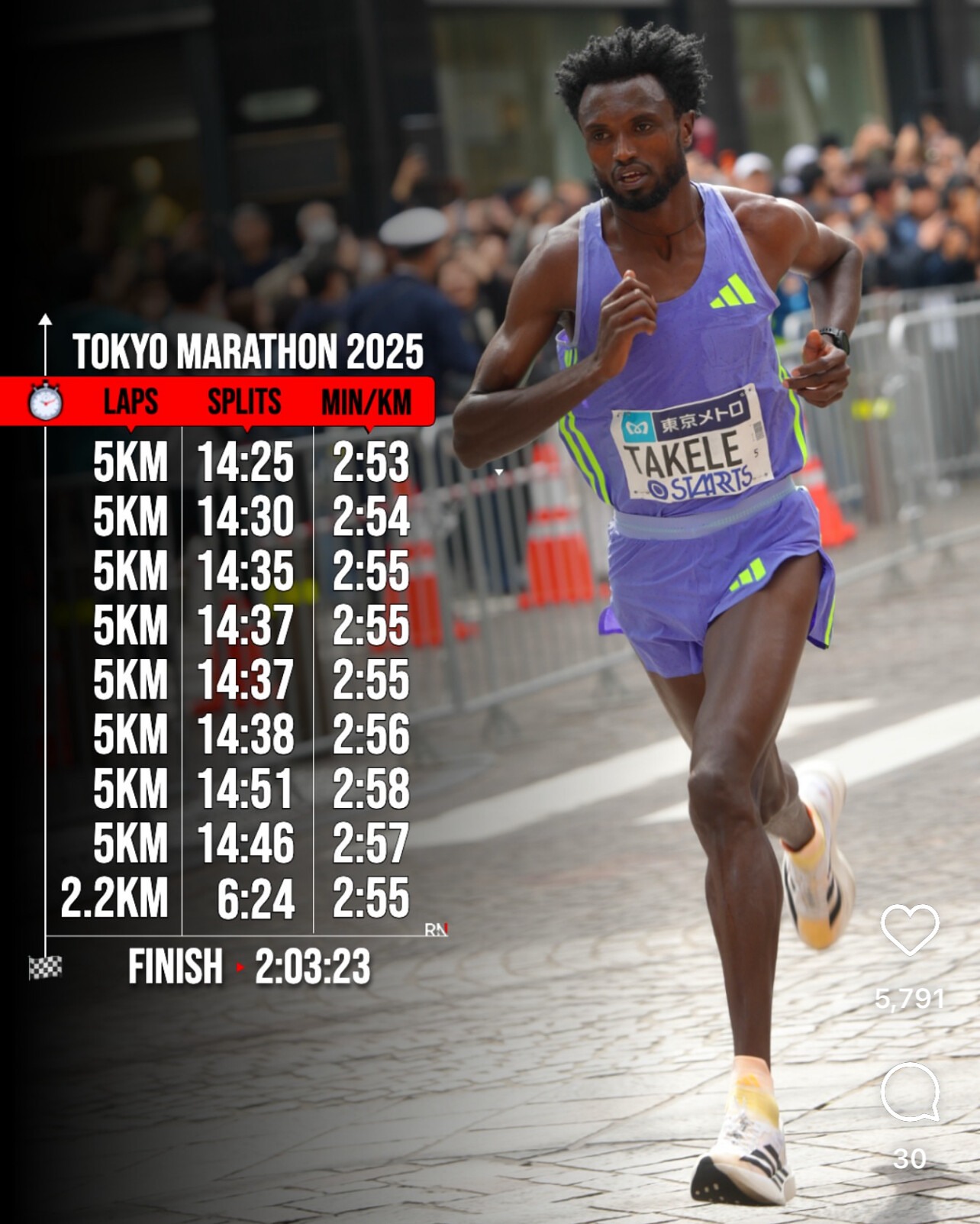
The men’s race began with a swift pace, with a leading pack maintaining a competitive tempo. Takele made a decisive move in the latter stages, breaking away to secure his victory.

The women’s marathon saw defending champion Sutume Asefa Kebede of Ethiopia retain her title, finishing with a time of 2:16:31. Kenya’s Winfridah Moraa Moseti secured second place, clocking in at 2:16:56, while Ethiopia’s Hawi Feysa finished third with a time of 2:17:00. Kenya’s Magdalyne Masai (2:19:28) and Rosemary Wanjiru (2:19:57) completed the top five.
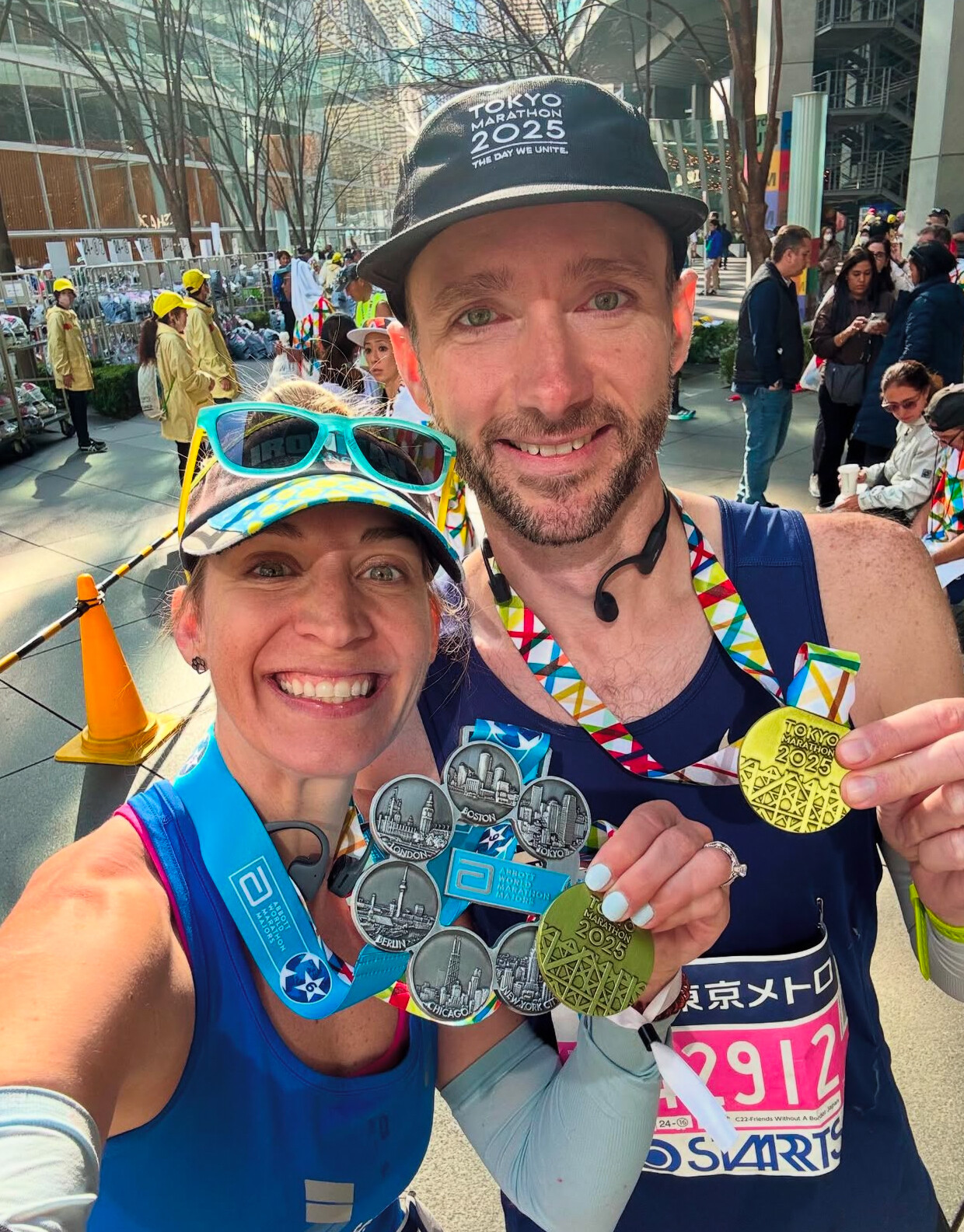
Kebede established an early lead, maintaining a strong pace throughout. Despite challenges in the final kilometers, she held on to her lead, showcasing resilience and determination.

The Tokyo Marathon is renowned for its vast participation, and the 2025 edition was no exception. Over 26,000 runners completed the course, reflecting the event’s inclusivity and global appeal.
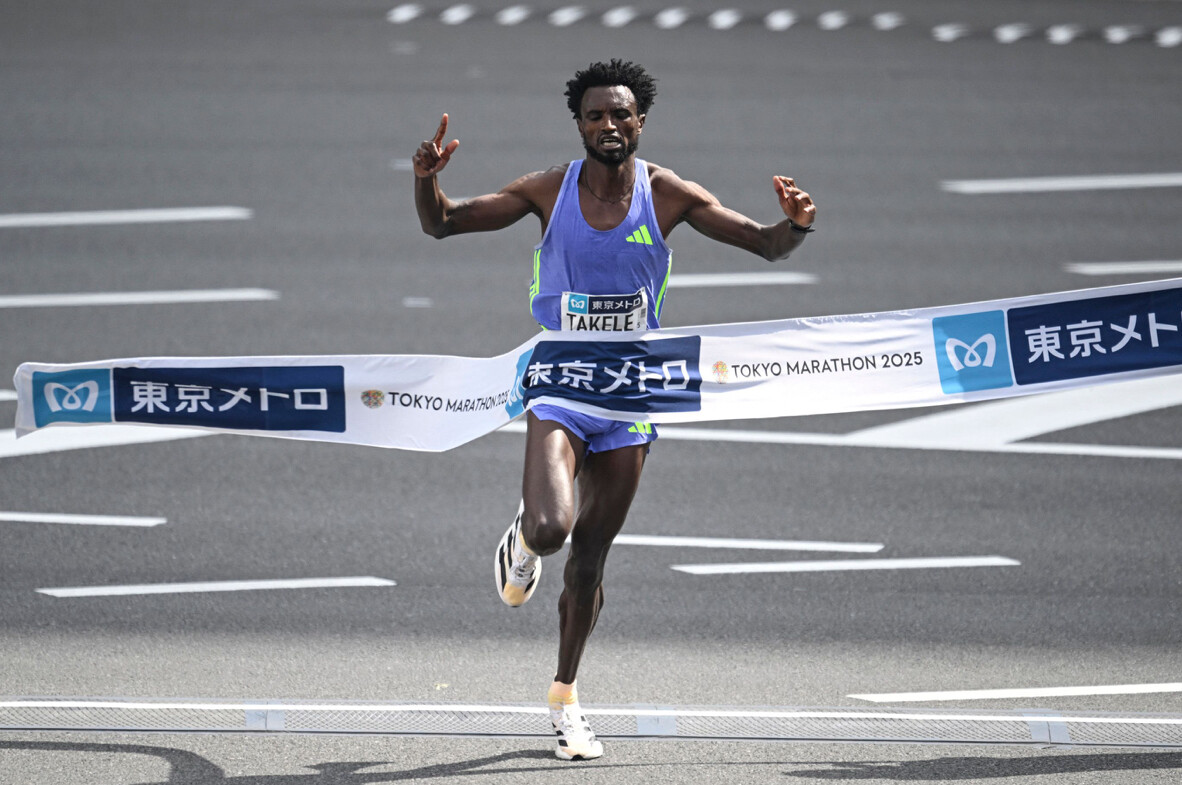
Among the participants was musician Harry Styles, who completed the marathon in an impressive time of 3:24:07, finishing 6,010th overall. Styles’ participation garnered significant media attention, highlighting the marathon’s wide-reaching allure.
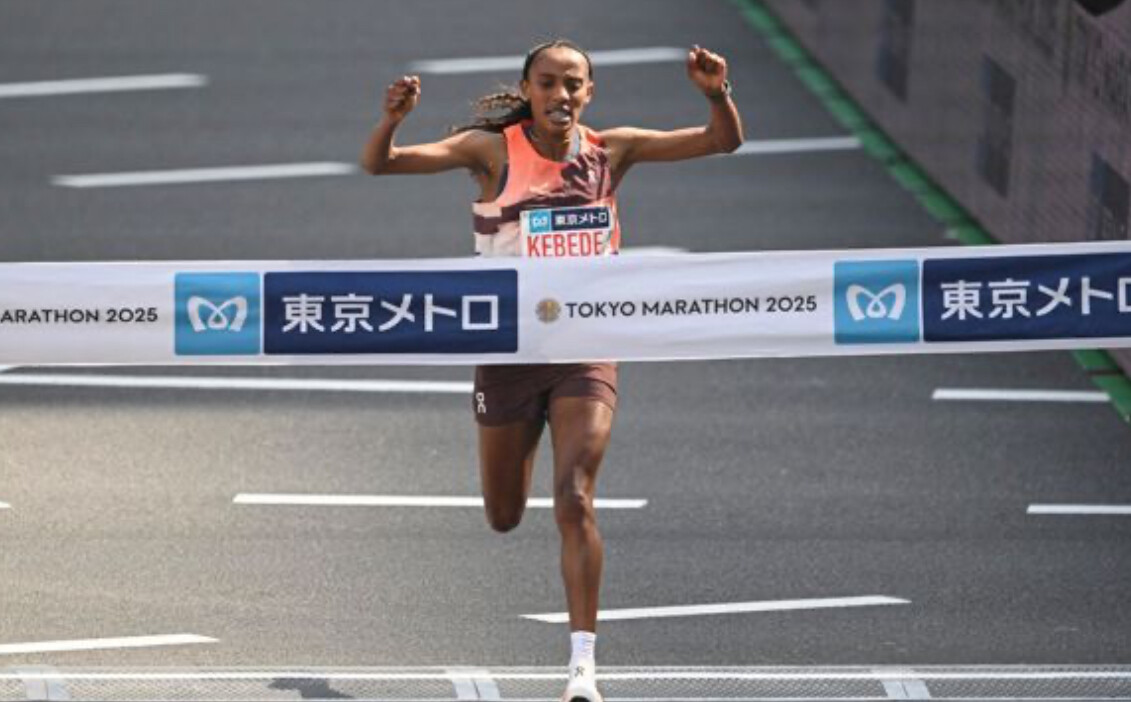
Established in 2007, the Tokyo Marathon has rapidly ascended in prominence, becoming one of the six World Marathon Majors. The inaugural event attracted approximately 30,870 participants, and the marathon has continued to grow, with recent editions seeing over 36,000 finishers.
The marathon’s course offers runners a unique tour of Tokyo, starting at the Tokyo Metropolitan Government Building and passing landmarks such as the Imperial Palace and Tokyo Tower, before finishing near Tokyo Station.
The 2025 Tokyo Marathon not only highlighted the dominance of Ethiopian athletes but also underscored the event’s status as a premier global running festival, uniting elite competitors and amateur runners from around the world.
(03/02/25) Views: 100Boris Baron
Ezekiel Nathaniel Breaks African Indoor 400m Record at Big 12 Championships
Nigeria’s Ezekiel Nathaniel has etched his name in the history books, setting a new African indoor 400m record with a blazing time of 44.74 seconds at the Big 12 Indoor Championships in Lubbock, Texas, on March 1. The Baylor University sprinter, who had already made headlines two weeks earlier as the first African to run sub-45 indoors, lowered his mark yet again with a commanding performance.
Nathaniel’s record-breaking run was nearly two-tenths of a second faster than his previous best and solidified his dominance in the event. His win in Lubbock not only secured the Big 12 title but also placed him among the fastest indoor 400m runners in history. His remarkable progress this season signals his potential as a rising star in world athletics, particularly as he builds momentum toward upcoming international competitions.
The Nigerian sprinter’s achievement highlights the growing presence of African athletes in sprint events traditionally dominated by the Americas and Europe. With the Paris 2024 Olympics fast approaching, Nathaniel’s performance puts him on the radar as a serious contender in the global 400m scene.
Nathaniel’s record-breaking form at Baylor University reflects his dedication and training under top-tier coaching. With his latest feat, he has not only raised the bar for African sprinters but also reaffirmed his status as one of the most promising young athletes in the sport.
(03/03/25) Views: 97Roma-Ostia Half Marathon Celebrates 50th Edition
The Roma-Ostia Half Marathon, Italy’s premier half marathon event, celebrated its 50th edition on Sunday, March 2, 2025, attracting nearly 13,000 runners from around the globe. The event showcased exceptional performances, particularly among the elite athletes.
In the men’s category, Kenyan athletes dominated the podium:
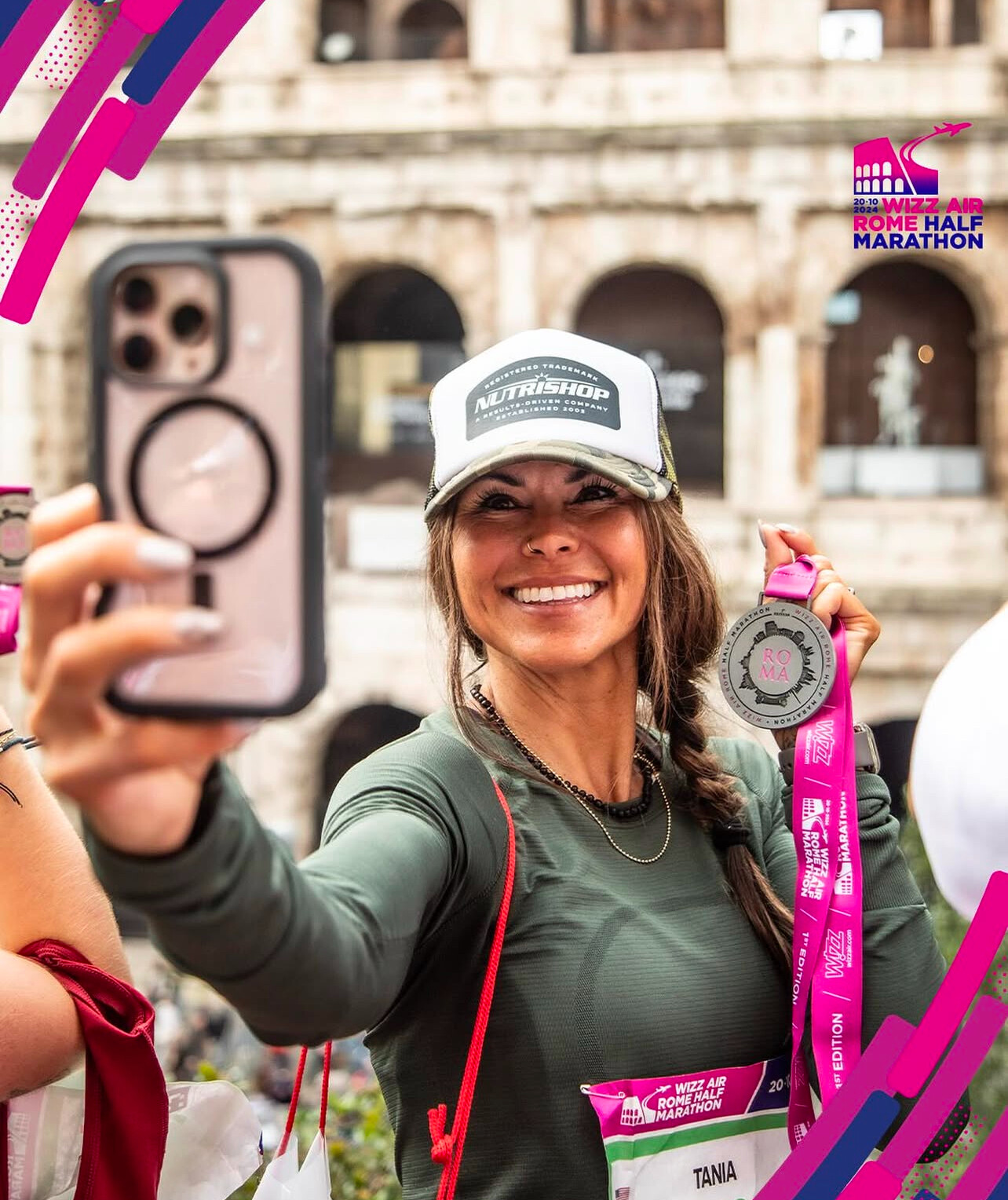
1. Gideon Rop (Kenya) – Rop clinched the title with a remarkable time of 58:49, showcasing his endurance and speed.

2. Cosmas Boi (Kenya) – Boi secured second place, finishing in 59:27, demonstrating consistent pacing throughout the race.

3. Soufiyan Bouqantar (Morocco) – Bouqantar completed the podium, crossing the line in 1:00:37, marking a strong performance for the Moroccan contingent.
The men’s race was characterized by a swift start, with Rop and Boi breaking away early. Rop maintained his lead, finishing comfortably ahead of his competitors.
The women’s competition was equally compelling:
1. Ludwina Chepngetich (Kenya) – Chepngetich emerged victorious with a time of 1:08:20, reflecting her tactical prowess and stamina.
2. Monica Chebet (Kenya) – Chebet claimed second place, finishing in 1:09:07, underscoring the depth of Kenyan talent.
3. Isabella Caposieno (Italy) – Caposieno delighted the home crowd by securing third place with a time of 1:16:46, marking a significant achievement in her running career.
The women’s race saw Chepngetich and Chebet setting a brisk pace from the outset. Chepngetich’s decisive surge in the latter stages secured her victory, while Caposieno’s performance highlighted her resilience and determination.
The 50th Roma-Ostia Half Marathon not only celebrated a significant milestone but also reinforced its status as a premier event in the international running calendar, delivering thrilling races and memorable performances.
(03/02/25) Views: 94Boris Baron


